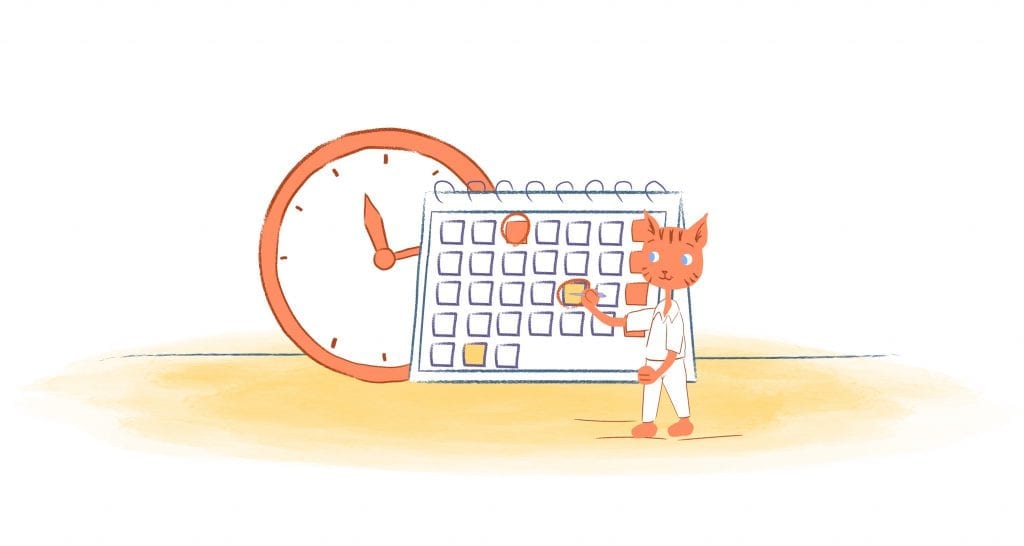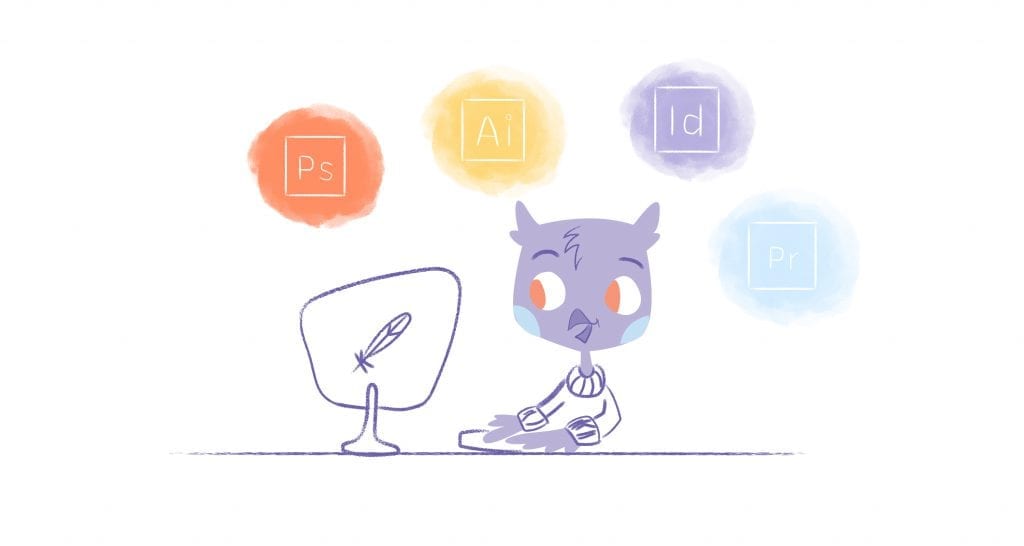

There’s more to your life than just being an entrepreneur. You may be a parent, on a board of directors, a great friend, and an avid Marvel fan. As such, it’s a constant battle to juggle running your business and making the most out of your personal life. That’s why so many of us live by our multiple calendars or planners.
There are, however, two trains of thought on this topic. On one side, some argue that it’s more comfortable and more convenient to keep one calendar. Others state that it’s more effective to maintain multiple planners and organizers. The fact is that this is a personal preference — and that isn’t a cop-out. There really isn’t a right or wrong answer. It depends on what time management techniques work best for you. Although, I can share with you the pros and cons of each to help guide you in making your decision.
Why Use One Calendar or Planner?
This one calendar or planner could be merging work and family calendars or jotting everything down into a bullet journal and it could even be digital or paper. The idea is that there several reasons why you should list all of your appointments, to-dos, and reminders in one location.
Everything in one place.
Having everything in one location is the most obvious advantage. Instead of toggling between online calendars or flipping through multiple planners, everything that’s important can be found in one place. That may not sound like a biggie. But, having it all in one place can shave off seconds that add up to hours — but most of all, it makes your life a whole lot easier.
More importantly, this can save you a ton of time — which can be spent growing your business. And, it also means that you don’t have to purchase multiple physical planners or calendars. In short, it saves you time and money.
Reduces conflicts.
Let’s say that a client or investor wants to meet with you for dinner. You go ahead and schedule that lunch because there is an open slot in your work calendar. But, you didn’t check your personal or social calendar. Turns out that you already had a prior commitment scheduled.
If you kept only one calendar — you would have spotted this conflict. As a result, you wouldn’t have to cancel or reschedule one of the events — which can be embarrassing and unprofessional.
Simplifies planning.
Piggybacking off the previous point. By maintaining just one logbook it makes planning as painless as possible. For example, you can make sure not to plan a meeting on Thursday at three p.m. because you have a doctor’s appointment or pick up the kids from school.
Because you’re using one system, your work and life won’t overlap, and you’ll be less likely to forget key events or tasks — not to mention you’ll reduce scheduling conflicts that are a major time-suck.
Why Use More Than One Calendar or Planner?
There are also advantages to using more than a planner and calendar.
Encourages time management in various areas of your life.
Think about everything that you need to get done in the course of a day. You have meetings at work, but also have chores at home. There are social obligations with friends and family. Placing all of that information into one location can lead to a cluttered calendar.
When your planner is so jam-packed that it’s bursting out of its seams — it’s almost impossible to read. Eventually, everything will collide into each other. In this case, the clutter could result in not allocating the right time for all of the various parts of your life.
Prevents you from sharing too much information.
Sharing your calendar, with your either your team or family, is a must. After all, it keeps everyone on the same page and reduces miscommunication. At the same time, you don’t want to share too much information with certain people.
Let’s say that your family is going to a theme park over a long weekend. Your colleagues don’t need to know your itinerary. They also don’t need to know what doctor’s you’re seeing or if you’re going to the movies with a friend. At the same time, your family may not need to know how you spend every hour at work, either.
Having multiple planners or multiple types of calendars solves this problem. You can only share your work calendar with those involved with your startup if you wish. You could then create a separate family calendar that’s reserved for just those in your household.
Gives you more options.
When you use multiple planners or calendars then that gives you some room to be flexible and creative. There could be one for just for meetings and another for your favorite sport’s teams’ schedule.
You could even make a calendar full of optional entries. For instance, if there was a networking event you were interested in, you could place it on your “Optional Calendar.” If you have the availability, then you can slip that event in and attend. Because you didn’t commit — or over-commit — you aren’t overwhelmed and can slip-in optional events that you want to go to — but may be too much on your schedule at other times.
How to Manage Multiple Planners or Calendars
If you decide to use more than one daybook, here are some pointers to help keep them organized and maintained.
Know what calendars to create.
Just because you can make as many calendars as your heart desires don’t mean that you should. Be selective and only create a calendar that makes managing work and life as seamless as possible. Unless you’re into astronomy — you probably don’t need a calendar that tracks the phases of the moon.
Sync your calendars.
Even if you keep separate calendars, it is essential to sync them together — if you want to avoid mishaps. For example, if you use Google Calendar as your main calendar, then definitely connect your work calendar to it so that you all of your most important responsibilities are in one location.
Give your calendars unique names.
What if you have a calendar named “Events?” Do you know what exactly is within that calendar? Is each of these events work-related appointments or social functions? Instead of leaving room for errors, be more specific. For instance, you could create “Work Appointments” and “Social Events” so that you can quickly access the right calendar when you need to.
Use color-coding.
Besides assigning unique names to your calendars use color-coding to give yourself an added advantage. Red could be used for detail-oriented tasks, grey for meetings, and green for exercise.
Color-coding is an effective way to identify your various top calendars and has been said to create balance and helps you become more mindful.
Display and hide specific calendars.
Most online calendars allow you to show or hide specific calendars. Hiding specific calendars can come in pretty handy when there are calendars you don’t need to access as frequently. For example, as soon as the baseball season is over, you should hide your favorites team’s schedule until the start of the new season. You don’t want to sift through the baseball or football season schedules in offseason unless that is your favorite time-waster. Your work schedule, however, should also be front and center.
Share the right calendar with the right people.
As previously mentioned, you need to share your calendar with others. The key to calendar sharing is to make sure that you only share the right one with the ideal people.
For example, only those in your startup would receive access to your work schedule. Your team, customers, and clients wouldn’t be able to view your family calendar since that was only shared with your spouse, children, etc.











John Rampton
John’s goal in life is to make people’s lives much more productive. Upping productivity allows us to spend more time doing the things we enjoy most. John was recently recognized by Entrepreneur Magazine as being one of the top marketers in the World. John is co-founder and CEO of Calendar.